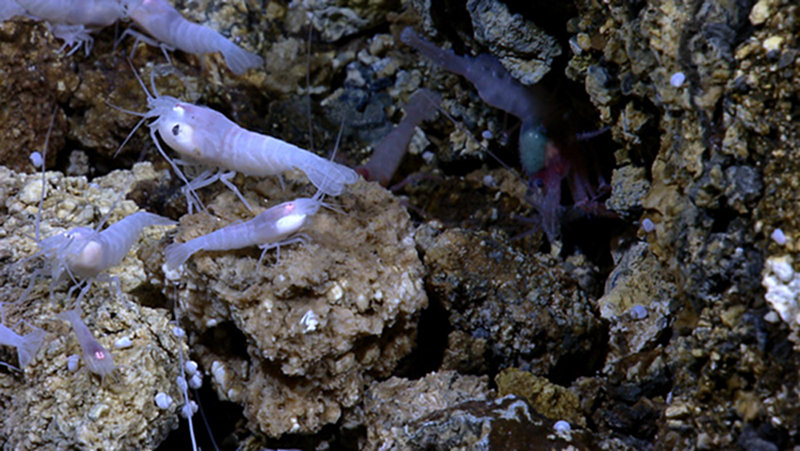
NOAA Ship Okeanos Explorer departed Rodman, Panama on August 2, commencing the 2011 Mid-Cayman Rise exploration. A team of interdisciplinary scientists – at sea and ashore – will conduct combined mapping, CTD and ROV operations in the region from August 5-15. Image courtesy of NOAA Okeanos Explorer Program, MCR Expedition 2011.
Download larger version (jpg, 820 KB).
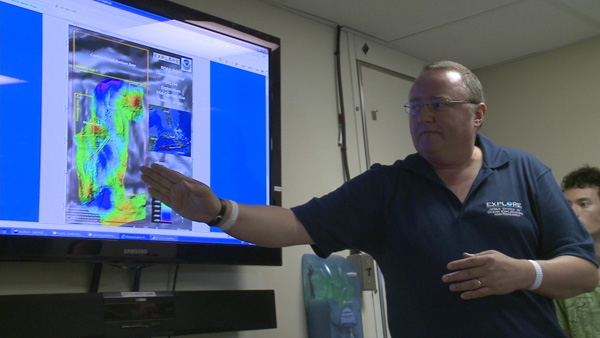
Science Team Lead, Chris German, provides an overview of the expedition and science objectives to the ship’s crew at the start of the expedition. Image courtesy of NOAA Okeanos Explorer Program, MCR Expedition 2011.
Download image (jpg, 72 KB).
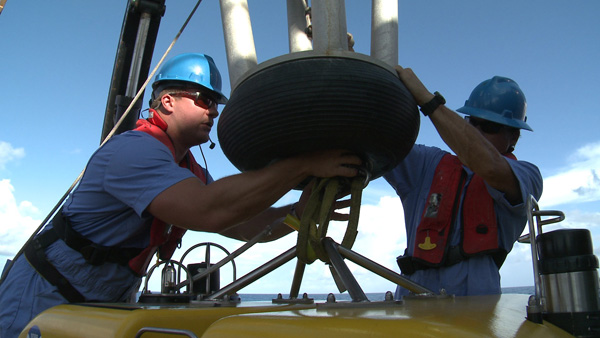
Chief Bosun Carl Verplanck and Able Seaman Jerrod Hozendorf attach the ROV to the ROV crane in preparation for the vehicles deployment. Image courtesy of NOAA Okeanos Explorer Program, MCR Expedition 2011.
Download larger version (jpg, 965 KB).
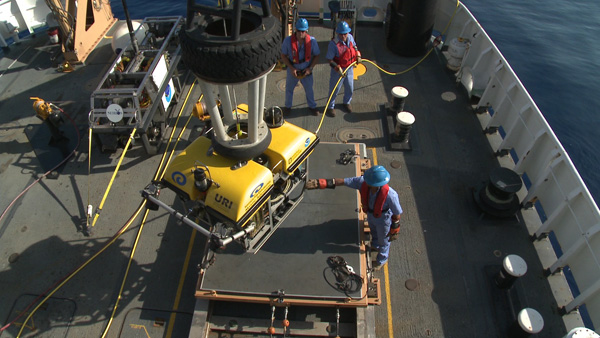
Institute For Exploration’s (IFE) Little Hercules ROV is lifted by the ROV crane and deployed over the side of the ship. Image courtesy of NOAA Okeanos Explorer Program, MCR Expedition 2011.
Download larger version (jpg, 1.1 MB).
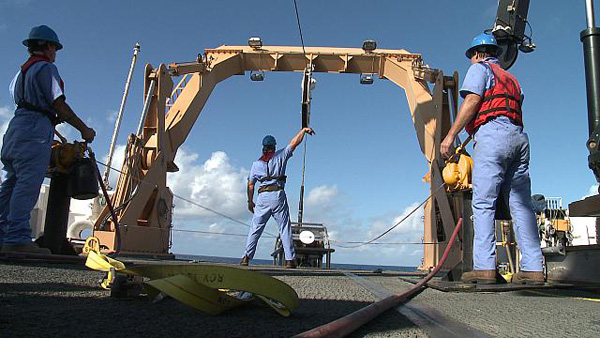
NOAA’s Seirios camera sled is deployed off the aft deck of the ship using the ship’s A-Frame. Image courtesy of NOAA Okeanos Explorer Program, MCR Expedition 2011.
Download image (jpg, 101 KB).
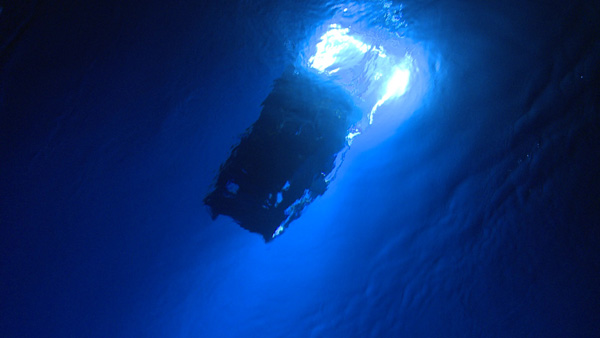
Seirios – the counter-part camera sled to the Little Hercules ROV – begins its descent deep into the ocean for an ROV dive. Image courtesy of NOAA Okeanos Explorer Program, MCR Expedition 2011.
Download larger version (jpg, 835 KB).
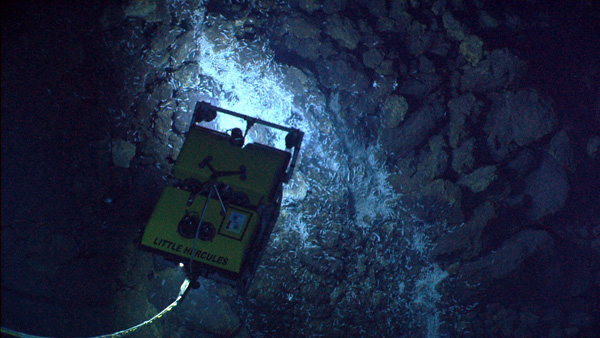
NOAA’s Seirios camera sled images IFE’s Little Hercules as it shines its lights on a dense aggregation of shrimp at the Von Damm hydrothermal vent site. Image courtesy of NOAA Okeanos Explorer Program, MCR Expedition 2011.
Download larger version (jpg, 1.8 MB).

Professor Paul Tyler stands watch in the control room onboard NOAA Ship Okeanos Explorer (EX) during ROV operations. EX Science Watch Leader responsibilities include communicating with many scientists onshore in real-time and ensuring their broader interests are incorporated into the dive. Image courtesy of NOAA Okeanos Explorer Program, MCR Expedition 2011.
Download larger version (jpg, 873 KB).
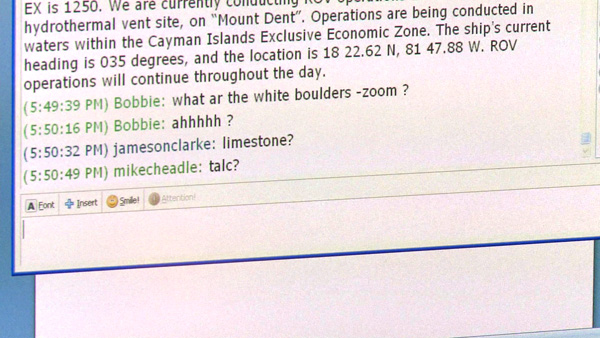
Scientists on shore are remotely engaged in the expedition through the use of “telepresence” technologies. One of the collaboration tools used by scientists located in various geographic locations is server-based instant messaging. Scientists located anywhere with an internet connection can view the live streams and comment on them in real-time in a centralized group chat room called the 'Eventlog'. Image courtesy of NOAA Okeanos Explorer Program, MCR Expedition 2011.
Download larger version (jpg, 1.1 MB).
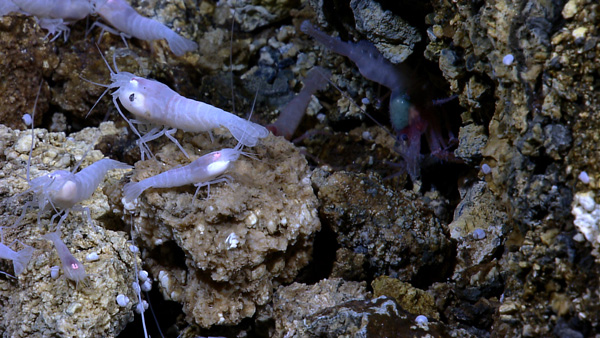
At least two species of shrimp are found at the Von Damm hydrothermal vent site. One relies on chemosynthesis for food, and the other may be a predator. Image courtesy of NOAA Okeanos Explorer Program, MCR Expedition 2011.
Download larger version (jpg, 1.5 MB).

Onboard scientists, Professor Paul Tyler, and Dr. Cameron McIntyre, view the live feeds from the ROV on the screen in their state room, and join the ship-to-shore communications using an RTS intercom unit. Image courtesy of NOAA Okeanos Explorer Program, MCR Expedition 2011.
Download larger version (jpg, 1.1 MB).
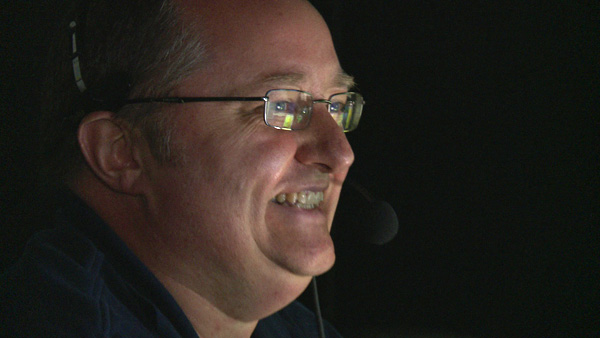
Science Team Lead Chris German, quite happy about the live feeds of the Von Damm hydrothermal vent field captured by the ROV more than 2,200 meters below. Image courtesy of NOAA Okeanos Explorer Program, MCR Expedition 2011.
Download larger version (jpg, 754 KB).


